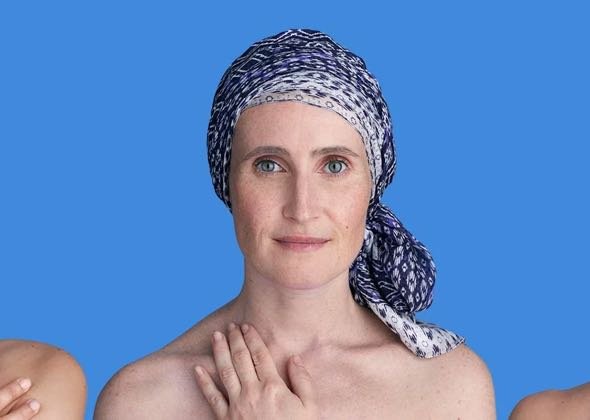WHAT IS A BURN?
Burns are one of the commonest household accidents, particularly among children. A burn is a type of injury where human tissue - usually the skin - comes into contact with extreme heat. This may be the direct heat of a flame, or a hot liquid (like scalding hot water or oil), or a hot object (like your oven). Burns can also be caused by certain chemicals such as strong acids, as well as radiation, friction and even cold.
Different types of burns have different treatments depending on their depth and extent, but for superficial burns it’s a good idea to pop to your local pharmacy and ask about burn creams or skin healing creams to boost recovery.
WHAT HAPPENS TO THE SKIN
WHEN IT GETS BURNT
When exposed to extreme heat, skin’s constitutive proteins are “denatured”. This means that the normal 3D structure of the protein molecule is unravelled. Thus altered, the proteins are no longer able to perform their physiological function. It’s a bit like what happens to raw meat when it is cooked: Its colour, texture and physical characteristics are transformed.
When skin’s proteins are damaged by heat, this sets off an inflammatory response due to the death of skin cells. Chemical messengers called inflammatory mediators are released, causing local blood vessels to dilate and the skin to turn red. Other changes in the skin, such as blistering, can occur. This depends on the depth or “degree” of the burn, which we’ll get onto in a minute. Read on for tips on how to heal your burn fast with a burn cream or skin healing cream.
WHAT BURN CREAM
SHOULD I USE?
Skin healing creams can optimise recovery
If you have a superficial burn (1st or 2nd degree, see below), your first reflex should be to run it under cold water for several minutes. This can limit the extent and depth of the burn and will help soothe the pain. Don’t use ice as this can actually worsen the damage.
Next, you want to take a trip to your local pharmacy and ask for a reputable burn or skin healing cream. Ideally, the formula should contain specific active ingredients to speed up and optimise epidermal healing, to soothe and protect the skin, and to reduce the chance of infection. Apply a thick layer of cream (consider keeping it in the fridge for extra relief), then cover the skin with a sterile dressing. Together, the cream and the dressing will protect the burn.
Remember, this advice only applies to superficial burns. If you think you may have a full-thickness or “3rd degree” burn (see below), it is vital that you seek medical attention as deep burns are potentially dangerous.
WHAT ARE
THE DIFFERENT TYPES OF BURNS?
How do I know what “degree” of burn I have?
Burns come in 3 main types: 1st, 2nd and 3rd degree burns.
Here’s how to tell the difference:
1st degree burns: Just like sunburn
A 1st degree burn is just like a sunburn. It affects the outermost layer of skin only and causes the affected area to turn red and painful. Superficial skin burns also often itch due to histamine release. Other than the sun, scalding hot water is a common cause of 1st degree burns. This type of burn takes 7-10 days to heal and will not leave a scar
2nd degree burns: Deeper, with blistering
A 2nd degree burn is a little deeper. Unlike a 1st degree burn, which only affects the epidermis, in a 2nd degree burn the superficial dermis (the deeper skin layer) is also affected. When this happens, the skin turns red but also blisters (do not pop them as this opens up the skin to infection). This is the most painful type of burn and is often caused by hot oil.
2nd degree burns take 2-3 weeks to heal and will not usually leave a scar, unless you have complications like an infection (which you can avoid with the right dressing and skin healing cream from the pharmacy). 2nd degree burns can, however, cause pigmentation changes in the skin, which is why it is essential to protect the area from the sun while it is healing, initially with a dressing and later with a skin healing cream containing SPF.
Click HERE to learn more about protecting scars from the sun.
Superficial burns will recover faster with a burn or skin protecting cream
Both 1st and 2nd degree burns are considered “superficial burns”. Usually, they can be managed at home without having to see a doctor, but if the burn is extensive or on the face or over a major joint, you should seek medical attention. If you have a superficial burn, there are things you can do to help it heal:
- Use cold compresses soaked in La Roche-Posay Thermal Spring Water to cool and soothe the burn
- Help skin barrier recoverywith a protecting cream from a reputable pharmacy brand with expertise in skin recovery.
- Cover it with a sterile dressing to avoid infection or exposure to external irritants.
- Use a protectingcream with SPF for several weeks.
Click HERE to view the CICAPLAST soothing range from La Roche-Posay, the dermatologist’s partner brand.
3rd degree burns: Time to seek medical attention
3rd degree burns are known as “full-thickness” burns because they affect every layer of skin down to the subcutaneous layer known as the hypodermis. Because they are so deep, 3rd degree burns destroy nerve fibres in the skin and for this reason they are often painless. In 3rd degree burns, the skin can take on a different appearance:
- white waxy colour
- charred appearance
- dark brown colour
- raised and leathery texture
If you think you might have a full-thickness burn, don’t panic as there are medical/surgical treatments available, but you should go to your local hospital emergency department as this is not something that can be managed at home.
WILL MY BURN
LEAVE A SCAR?
With the right care, superficial burns will not usually scar
Scars from burns can be unsightly and cause significant distress. If properly looked after, superficial burns (1st and 2nd degree) will not usually leave a scar. 1st degree burns will almost never form scars. 2nd degree burns may leave scars behind if they get infected, which is why proper hygiene with a dermo-cosmetic cleanser is essential followed by a burn cream and a sterile dressing.
Click HERE to discover, the cleanser for fragilized skin.
For optimal recovery, ask your pharmacist about burn creams. Remember, after a burn, the skin is sensitive, fragile and in need of protection with specific dermo-cosmetic care products. It is also at risk of post-inflammatory hyperpigmentation (leaving behind a dark brown mark following sun exposure), so be sure to use a skin recovery cream with a strong SPF for several weeks after the injury.
Full-thickness burns will usually scar
Unfortunately, 3rd degree burns will usually leave some kind of scar on the skin. This is because the damage is so deep that the skin reacts by producing dense collagen to replace the lost skin. This collagen is known as a scar tissue. With early medical attention and proper treatment, you can minimise this scarring.
Complications of burn scars
If your burn is not properly treated, or quite simply if you are unlucky, you can develop several types of unsightly burn scars. These include:
- Hypertrophic scarring, where the scar is red and raised but remains within the confines of the original burn.
- Contractures, where a scar begins to tighten and “contract”. This can be dangerous if the scar is “circumferential” e.g. it goes all the way round part of the body such as a finger. If you have a circumferential burn, it is important that you see a doctor as soon as possible.
- Keloid scarring, which is where the scar becomes thick and bulky, growing beyond the confines of the original burn. Keloid scar burns often cause itching.
Each of these conditions has its own specific treatments, which you can discuss with your doctor.
The take-home message? Seek medical attention as soon as you burn your skin if you think you have a 3rd degree burn, or if your superficial burn is extensive, on your face, or over a major joint. Most superficial burns can be managed at home with cool thermal water-soaked compresses, a good recovery cream and sterile dressings from the pharmacy.
Click HERE to discover the full skin soothing range from the expert pharmacy brand La Roche-Posay.
Click HERE for more information on scars and how to treat them.
If you have a wound with stitches, click HERE for a quick guide.




